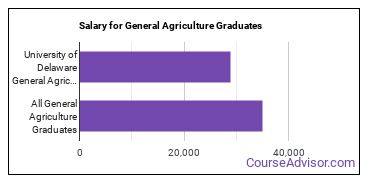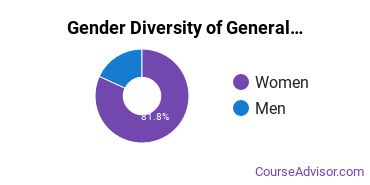General Agriculture at University of Delaware
UD is located in Newark, Delaware and approximately 23,613 students attend the school each year. Of the 4,743 students who graduated with a bachelor’s degree from University of Delaware in 2021, 44 of them were general agriculture majors.
Want to know more about the career opportunities in this field? Check out the Careers in General Agriculture section at the bottom of this page.
Featured schools near , edit
UD General Agriculture Degrees Available
- Associate’s Degree in Agriculture
- Bachelor’s Degree in Agriculture
UD General Agriculture Rankings
The following rankings from College Factual show how the agriculture progam at UD compares to programs at other colleges and universities.
Note: Rankings don't always give a complete picture of a school's strengths and weaknesses, so it's a good idea to extend your research and also look at other factors when trying to decide if the school is right for you.
Bachelor’s Degree Overall Quality & Other Notable Rankings
The agriculture major at UD is not ranked on College Factual’s Best Colleges and Universities for General Agriculture. This could be for a number of reasons, such as not having enough data on the major or school to make an accurate assessment of its quality.
| Ranking Type | Rank |
|---|---|
| Best General Agriculture Bachelor’s Degree Schools | 27 |
| Most Focused General Agriculture Bachelor’s Degree Schools | 44 |
Earnings of UD Agriculture Graduates
The median salary of agriculture students who receive their bachelor's degree at UD is $28,961. Unfortunately, this is lower than the national average of $35,083 for all agriculture students.

Agriculture Student Demographics at UD
Take a look at the following statistics related to the make-up of the agriculture majors at University of Delaware.
UD General Agriculture Associate’s Program

The majority of those who receive an associate's degree in agriculture at UD are white. Around 100% fell into this category, which is below average for this degree.
The following table and chart show the race/ethnicity for students who recently graduated from University of Delaware with a associate's in agriculture.

| Race/Ethnicity | Number of Students |
|---|---|
| Asian | 0 |
| Black or African American | 0 |
| Hispanic or Latino | 0 |
| White | 2 |
| International Students | 0 |
| Other Races/Ethnicities | 0 |
UD General Agriculture Bachelor’s Program

About 75% of those who receive a bachelor's degree in agriculture at UD are white. This is typical for this degree on the nationwide level.
The following table and chart show the race/ethnicity for students who recently graduated from University of Delaware with a bachelor's in agriculture.

| Race/Ethnicity | Number of Students |
|---|---|
| Asian | 0 |
| Black or African American | 2 |
| Hispanic or Latino | 8 |
| White | 33 |
| International Students | 1 |
| Other Races/Ethnicities | 0 |
UD also has a doctoral program available in agriculture. In 2021, 0 student graduated with a doctor's degree in this field.
Related Majors
- Food Science Technology
- Plant Sciences
- Agricultural Economics & Business
- Animal Science
- Agriculture/Veterinary Preparatory Programs
Careers That Agriculture Grads May Go Into
A degree in agriculture can lead to the following careers. Since job numbers and average salaries can vary by geographic location, we have only included the numbers for DE, the home state for University of Delaware.
| Occupation | Jobs in DE | Average Salary in DE |
|---|---|---|
| Soil and Plant Scientists | 90 | $56,870 |
References
*The racial-ethnic minorities count is calculated by taking the total number of students and subtracting white students, international students, and students whose race/ethnicity was unknown. This number is then divided by the total number of students at the school to obtain the racial-ethnic minorities percentage.
- College Factual
- National Center for Education Statistics
- O*NET Online
- Image Credit: By Ottawa80 at English Wikipedia under License
More about our data sources and methodologies.
Featured Schools
 Request Info
Request Info
|
Southern New Hampshire University You have goals. Southern New Hampshire University can help you get there. Whether you need a bachelor's degree to get into a career or want a master's degree to move up in your current career, SNHU has an online program for you. Find your degree from over 200 online programs. Learn More > |
